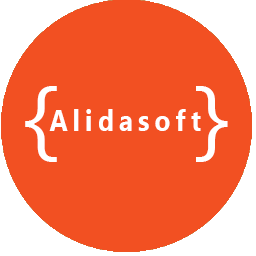AWS Cloud Practitioner Essentials
A Comprehensive Guide to AWS Cloud Practitioner Essentials
Introduction
Embarking on your journey into the vast landscape of AWS Cloud Computing is an exciting prospect. To help you navigate this dynamic realm effectively, this comprehensive guide explores the essentials every prospective AWS Cloud Practitioner should know. Let’s dive into the intricacies of AWS Cloud Practitioner Essentials.
Understanding the AWS Cloud Landscape
Grasping the Fundamentals
-
Introduction to Cloud Computing:
- Defining cloud computing and its key characteristics.
- Understanding the advantages of cloud services.
-
Overview of AWS Global Infrastructure:
- Exploring AWS regions and availability zones.
- Recognizing the significance of edge locations.
Essential AWS Services
Building Blocks of Cloud Computing
-
Amazon S3 (Simple Storage Service):
- Understanding object storage and its use cases.
- Configuring and securing your first S3 bucket.
-
Amazon EC2 (Elastic Compute Cloud):
- Unraveling the concept of virtual servers in the cloud.
- Launching and connecting to your EC2 instances.
-
AWS Lambda:
- Grasping serverless computing concepts.
- Creating and deploying your first Lambda function.
-
Amazon RDS (Relational Database Service):
- Exploring managed relational databases in the cloud.
- Setting up and securing an RDS instance.
AWS Identity and Access Management (IAM)
Securing Your AWS Resources
- IAM Users and Groups:
- Managing access to AWS services securely.
- Implementing IAM policies for fine-grained control.
Security Best Practices
Safeguarding Your Digital Assets
-
Shared Responsibility Model:
- Understanding the division of security responsibilities.
- Securing data and access controls effectively.
-
AWS Key Management Service (KMS):
- Managing cryptographic keys for data protection.
- Enabling encryption for various AWS services.
Cost Management
Optimizing Your AWS Spending
-
AWS Pricing Models:
- Exploring different pricing models for AWS services.
- Understanding the AWS Free Tier and its benefits.
-
AWS Billing and Cost Explorer:
- Navigating the AWS Billing Console for cost monitoring.
- Utilizing Cost Explorer for in-depth cost analysis.
Exam Preparation Strategies
Setting the Stage for Success
-
AWS Certified Cloud Practitioner Exam Overview:
- Understanding the structure and format of the exam.
- Exploring sample questions for effective preparation.
-
Study Resources and Tips:
- Leveraging official AWS training materials.
- Incorporating hands-on labs and practical experience into your study plan.
Real-World Use Cases
Bridging Theory with Practice
- Case Studies:
- Analyzing real-world scenarios of AWS Cloud Practitioner Essentials.
- Gaining insights from organizations benefiting from AWS.
Community and Further Learning
Connecting with the AWS Ecosystem
- AWS Community and Forums:
- Engaging with the AWS community for support.
- Participating in forums and discussions for shared learning.
Conclusion
Mastering AWS Cloud Practitioner Essentials sets the foundation for a successful journey into AWS Cloud Computing. By comprehending the fundamentals, exploring essential services, and embracing security and cost management best practices, you position yourself for success in both the exam and real-world applications.
Summary
-
Understanding the AWS Cloud Landscape:
- Cloud computing fundamentals and AWS global infrastructure.
-
Essential AWS Services:
- Amazon S3, EC2, AWS Lambda, and Amazon RDS.
-
AWS Identity and Access Management (IAM):
- Managing access securely through IAM.
-
Security Best Practices:
- Shared Responsibility Model and AWS KMS.
-
Cost Management:
- AWS pricing models and billing management.
-
Exam Preparation Strategies:
- Overview of the AWS Certified Cloud Practitioner Exam.
-
Real-World Use Cases:
- Application of AWS Cloud Practitioner Essentials in real scenarios.
-
Community and Further Learning:
- Connecting with the AWS community for ongoing learning.

